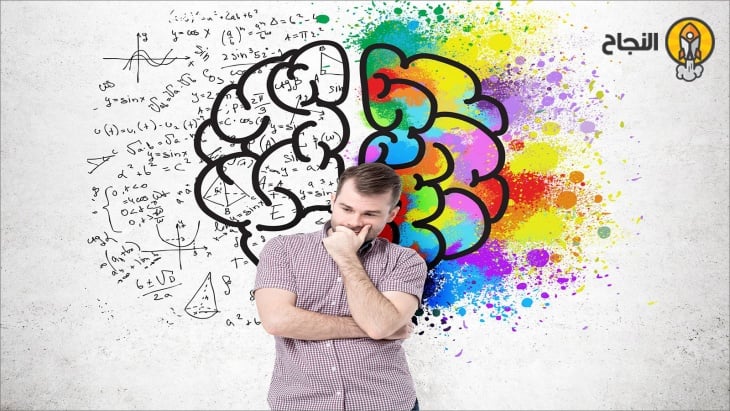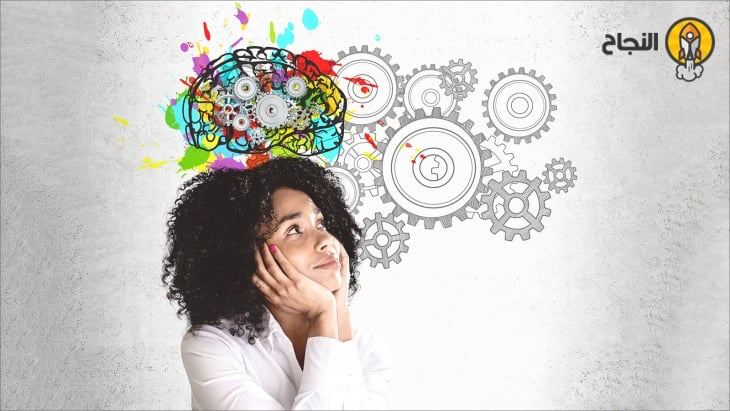

Definition of Creativity:
Creativity has many definitions, including:
It is the ability to bring something new, whether in any field of high-level specialization, the arts, or life in general.
Approaching familiar matters in unfamiliar ways can also be described as creativity.
It is seeing things in a way that cannot be objected to.
The result is a new, unimaginable work.
Deviation from original errors and a break from the systematic sequence of thinking.
It is a form of liberation from the constraints imposed by time and place.
It is work that leads to alternative and innovative solutions that are all one.
Types of Creativity:
Creativity is divided into the following levels:
Expressive Creativity: Expressive creativity occurs in the fields of art and literature, and creative features in this field include the ability to speak to people.
Artistic Creativity: This is the ability to play musical instruments and sing.
Creative Creativity: This creativity originated in administrative fields, and this field-specific innovation is characterized by unconventional administrative solutions.
Creative Creativity: This is finding creative solutions in several forms.
Innovative Creators: This refers to the creation of various solutions, models, and problems.
Innovations: These are solutions to emergencies or surprises.
Characteristics of Creativity:
A new invention is characterized by a variety of characteristics, the most important of which are:
Relativity: Relative relativism refers to the uniqueness of a new idea over its predecessors.
Discussion ceremonies with the values of the bride: This refers to the thousands of conflicts between new discussions and the values and beliefs held by their proponents.
Interlocking with other leftists: This refers to the inability to share creative ideas with other leftists, and the extent to which they can be understood and applied in practice.
Divisibility: This refers to the extent to which an idea can be divided and a limited portion of it can be tested.
Transferability: This refers to the extent to which an idea can be used, depending on how easy or difficult it is.
Profitability from the idea: This refers to the amount of profit the person who created the creative idea will generate from it, and the extent to which they will gain new experiences and skills.
Stages of Creativity:
Creativity goes through several stages, including:
The Preparation Stage: This is one of the most important stages, as the creative person collects and analyzes data, then extracts information.
The Fermentation Stage: This stage refers to the idea fermenting in the creative person's mind, and their conviction of a solution to the problem. They then begin to attempt to address it effectively. This is one of the most difficult stages, as the creative mind experiences a state of anxiety and instability during this stage.
The Inspiration Stage: This is a very important stage, requiring a greater effort, as this is the stage in which the creative person arrives at a radical solution and organizes their ideas in their mind.
The Verification Stage: During this stage, the creative person verifies the validity of the innovation and announces the idea that has formed in their mind to ensure its benefit to members of society.
Creative Thinking Skills:
These aspects contribute to developing creativity and are a summary of many studies and research conducted by leading experts and academics in psychology and human development. The most important of these are:
Imagination: This is the ability to come up with creative, unconventional ideas, resulting from combining several different concepts.
Flexibility: Flexibility means the ability to view things from multiple perspectives.
Decision-Making: Decision-making plays a significant role in developing creativity, as it requires individuals to think and choose the best solution to a problem.
Collaboration: Exchanging ideas and experiences with others helps solve problems and achieve a common goal. Collaboration and working with others also expands thinking by learning about other viewpoints and the way others think.
Communication: Communication contributes to developing creativity in humans by providing them with the opportunity to express themselves, their feelings, and their thoughts through language, art, and movement, to reveal their hidden creativity. Motivation: A person's internal motivations are the foundation of development and creativity, as they encourage research and exploration to satisfy their curiosity and enrich their experience.
Exercise: Physical activity increases a person's ability to concentrate and learn, and stimulates memory, as movement stimulates learning cells in the brain.
Exercises on Creative Thinking Skills:
Many scientists and experts agree that creativity is a "muscle" that can be developed and enhanced through certain exercises. These include:
Reading content different from what we like: We often read about our favorite things or those in our field, but this does not enhance creativity. To stimulate creativity, we must begin by consuming content we do not normally consume.
The 500-Word Essay Exercise Without a Topic: This exercise helps develop creative thinking. All we have to do is open a blank document and begin writing, without a title or topic. We simply let our fingers begin typing, and our mind decides the words to be written!
Sitting with people we don't know: Meeting people who are completely unfamiliar with our own thinking and interests may give us a fresh perspective on things we've never heard before. Hearing new stories will also open up new horizons for our minds and imaginations.
Brainstorming: Brainstorming involves asking a group of people to join us for a 45-60-minute brainstorming session, with no technology or criticism. We brainstorm an idea or topic, brainstorm it back and forth, and write down our thoughts on paper and pen, avoiding all technology for research and writing. A brainstorming session may yield 100 unique and creative ideas, and our creativity will improve the more we practice this exercise.